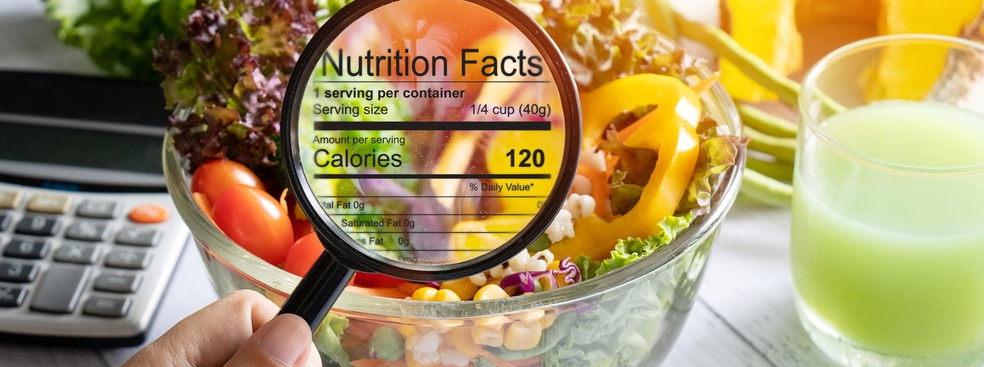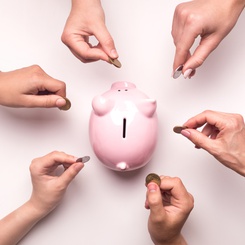With ESSEC Knowledge Editor-in-chief
With the holidays approaching at a rapid clip, the question of how to demonstrate self-control with our wallets and with our eating habits is looming large. It’s impossible to avoid the endless parade of advertisements tempting you to buy the scarf, eat the Christmas cookie, drink the champagne: and it can help to be aware of the impact that marketing campaigns can have on our decisions. Here, Dr. Sonja Prokopec discusses her recent research on how cost information can impact self-control.
Before making a purchase, we use an array of information to decide whether or not we will do so. You’ll likely check the price, seeing if it fits into your budget or seems reasonable compared to other options; if it’s food, you might scan the nutritional content to make sure the calorie content isn’t too astronomical and that the sugar content isn’t more than an adult should eat in a day. Clearly, the information we take into account often involves numbers, with a wealth of research indicating that the way these numbers are presented can significantly influence how we perceive the product and our subsequent likeliness to snap it up or tuck in. Dr. Prokopec’s study, conducted with Dr. Keith Wilcox (Columbia Business School), extends this line of research in a series of experiments, finding that people are especially influenced by how cost information is presented when they have been encouraged to show restraint, in that their desire to show restraint can blind them and inhibit self-control goals.
Size matters: what is numerosity and how does it sway our decisions?
When presented with a product we are trying to make up our minds about, we make a series of quick evaluations about it. One of those evaluations involves assessing what it’s worth, and herein lies the rub: we don’t always properly assess this, even when presented with the information we need to make an accurate judgment. Instead, we tend to consider how many elements are contained in a stimuli and the scale on which these elements are presented and to think that things are bigger when they contain more elements or are on a bigger scale, regardless of their actual meaning or value. But bigger isn’t always better, and this heuristic can lead us astray. For example, when faced with the option to buy a lipstick that is advertised as “selling 100000 a year!” instead of “selling 9000 a month!”, we will think that the former is the more popular option, despite the latter actually selling more overall. It’s similar to how a week seems longer when you frame it as “seven days” - the referent scale used matters. Since we don’t always analyze this information further, we might not always make the most logical decision. Prokopec and Wilcox examined this here by manipulating how a product was presented, so that information about the same product was shown with higher or lower numerosity (presented on either a smaller contracted scale or a larger expanded scale) to see how people reacted and how their restraint, self-control, and intent to avoid negative feelings motivated their decision.
How do emotions come into play?
Being able to resist temptation and stick to your goals, otherwise known as self-control, is important for a whole host of outcomes, from your career to your well-being. When faced with temptation, we go through a decision-making process to determine whether or not we succumb to it. Part of this evaluation involves reflecting on how we’ll feel afterwards. Since acting in a way that runs counter to personal goals is often followed by negative feelings like guilt, people learn to associate losing self-control with negative emotions. Think of the term “guilty pleasure” or how we refer to overindulging as “cheat days”: they associate negative words with the act of giving in to self-control. Knowing that this type of “cheating” and loss of self-control can come along with feeling bad helps people self-regulate and stick to their goals to avoid feeling bad. In other words, people who are really trying to exercise restraint exert self-control by thinking of the negative feelings that will arise if they do not do so. They are then likely to hyper-focus on avoiding negative information, narrowing their focus of attention and causing them to focus on easily available information like cost information (such as its price or nutritional value) without really analyzing that information.
What kind of situation makes people experience this kind of attention narrowing? It’s common when we perceive a threat: we then zone in on the most relevant information for dealing with the situation. In this case, this meant that participants focused on how the cost information about the product was presented.
Testing it out
To see how exactly cost information, self-control, and restraint interact, Prokopec and Wilcox set up a series of experiments with participants recruited online. In the first experiment, they looked at how people who had a greater tendency to show restraint with their wallets spend their money compared to the spendthrifts. They found that those who were more restrained by nature showed less self-control and spent more when they submitted their bid on a larger scale, thus falling victim to the numerosity of the cost information.
Their second study built on these findings by prompting people to be either more or less restrained and then having them make a choice about unhealthy eating, again showing this information on either a small scale or a large scale. People who had been primed to show restraint tended to go for an unhealthy snack when the nutritional information was presented on a smaller scale, even though it was equally unhealthy when presented on a larger scale. For people who weren’t prompted to show restraint, the cost information didn’t impact their likelihood to eat the unhealthy snack.
So far, we can glean that those who are either more restrained by nature or encouraged to show restraint tend to be more biased by the way the cost information of a product is presented. But why? This is where attention narrowing comes in: from study 3, we learn that this is because it is important for their self-control, not that these people evaluate cost & value differently. More restrained people indicate that they evaluate items’ value in the same way, so the difference in how they’re biased by the cost information lies in their desire to show self-control. A further study showed that people are particularly motivated by trying to avoid negative emotions. The researchers found that when nutritional information is presented on a contracted scale, restrained participants showed less self-control as they anticipate less guilt arising from that choice. Those who are less restrained aren’t swayed by the type of scale.
What happens when your attention isn’t narrowed in that way? Are you able to take in more information and avoid being biased? The answer is yes: when the researchers introduced a step that broadened participants’ attention, even the more restrained among them weren’t biased by the way the cost information was presented to the same extent. This is because when people who are trying to show restraint consider making a decision that involves a loss of control, they anticipate feeling badly about this decision. Their attention then zooms in on how they can avoid feeling badly, leading them to ignore other potentially relevant information and focus on what’s easily available: the cost information. Because of their narrower focus, they are more biased by how that information is presented. In other words, people who are trying harder to show restraint are trying to exert self-control by reminding themselves of how badly it will make them feel to give in and this can mean that they are more prone to being biased by the way the cost information of a product (like its price or nutritional content) is presented.
Why do this in a lab setting instead of ‘in real life’? By using experiments like the researchers did here, they maintain control over all aspects of the scenario and are able to manipulate different factors (like cost information, restraint, and attention focus), allowing for a more rigorous hypothesis test. This level of rigour also means that the findings will likely hold true in a variety of settings and for a variety of people... so beware next time you’re facing down that second glass of wine!
Takeaways for self-control
What can we take home from this and apply to our own efforts to show self-control this holiday season? Remember the following points:
-
More than face value: Think about the true meaning and value of the numbers you see, rather than just their size.
-
Be positive: Don’t let the fear of feeling bad keep you from taking it all in: be aware of how trying to avoid bad decisions can impact your decision-making process.
-
Be open-minded: Consider all the information you have available to you about the product before making your decision.









